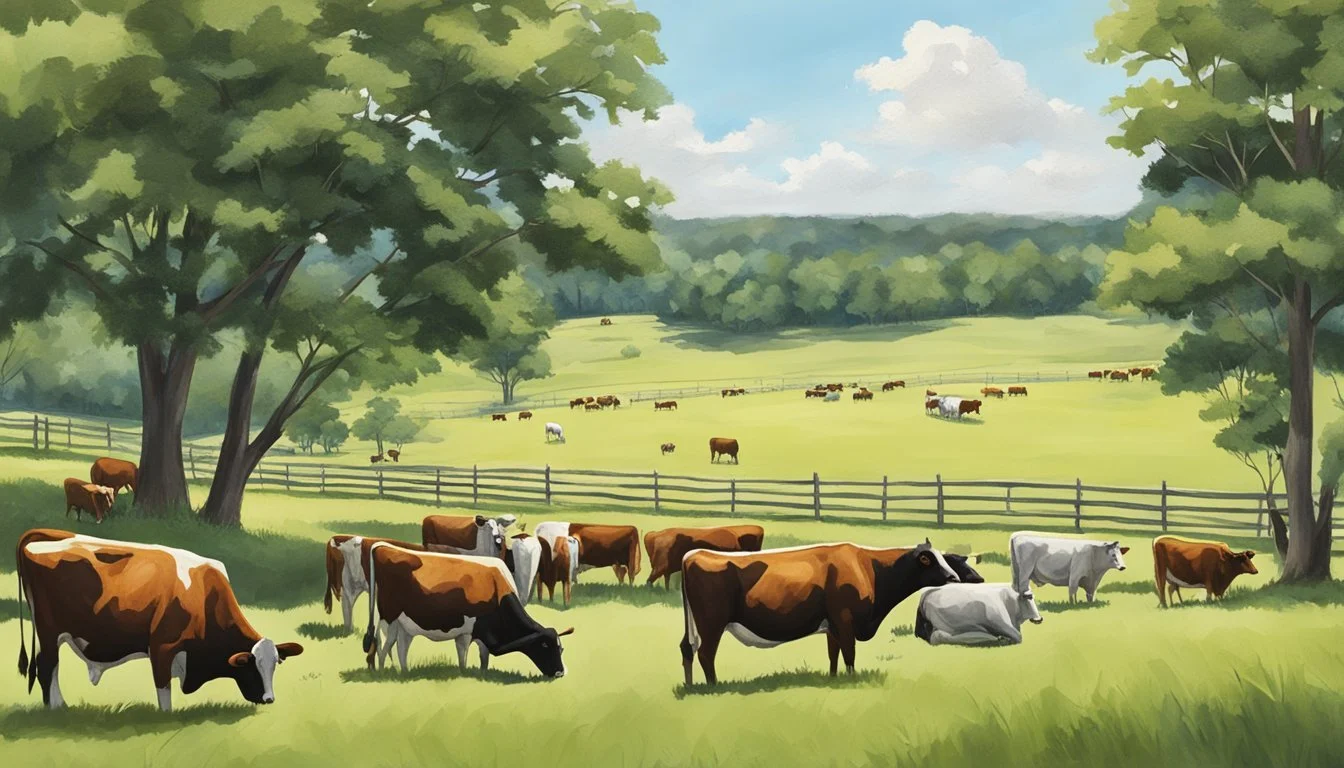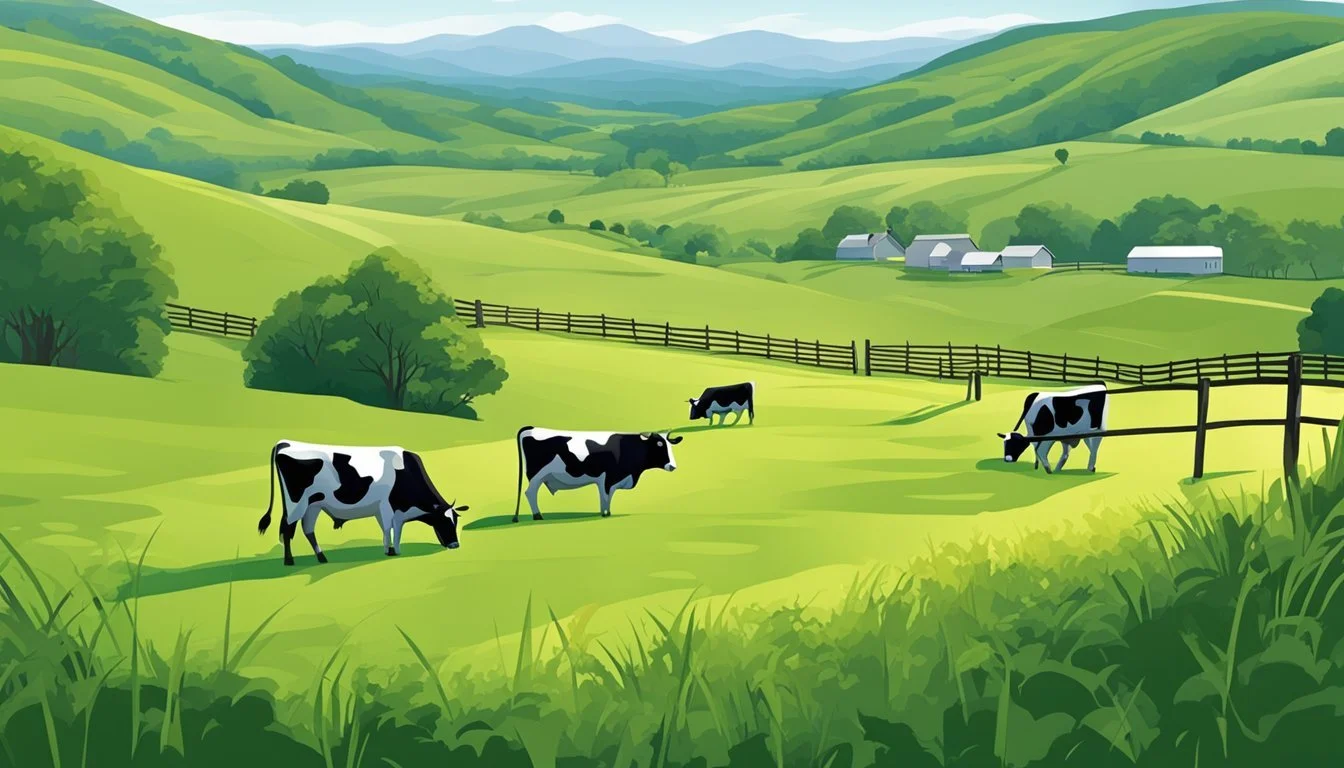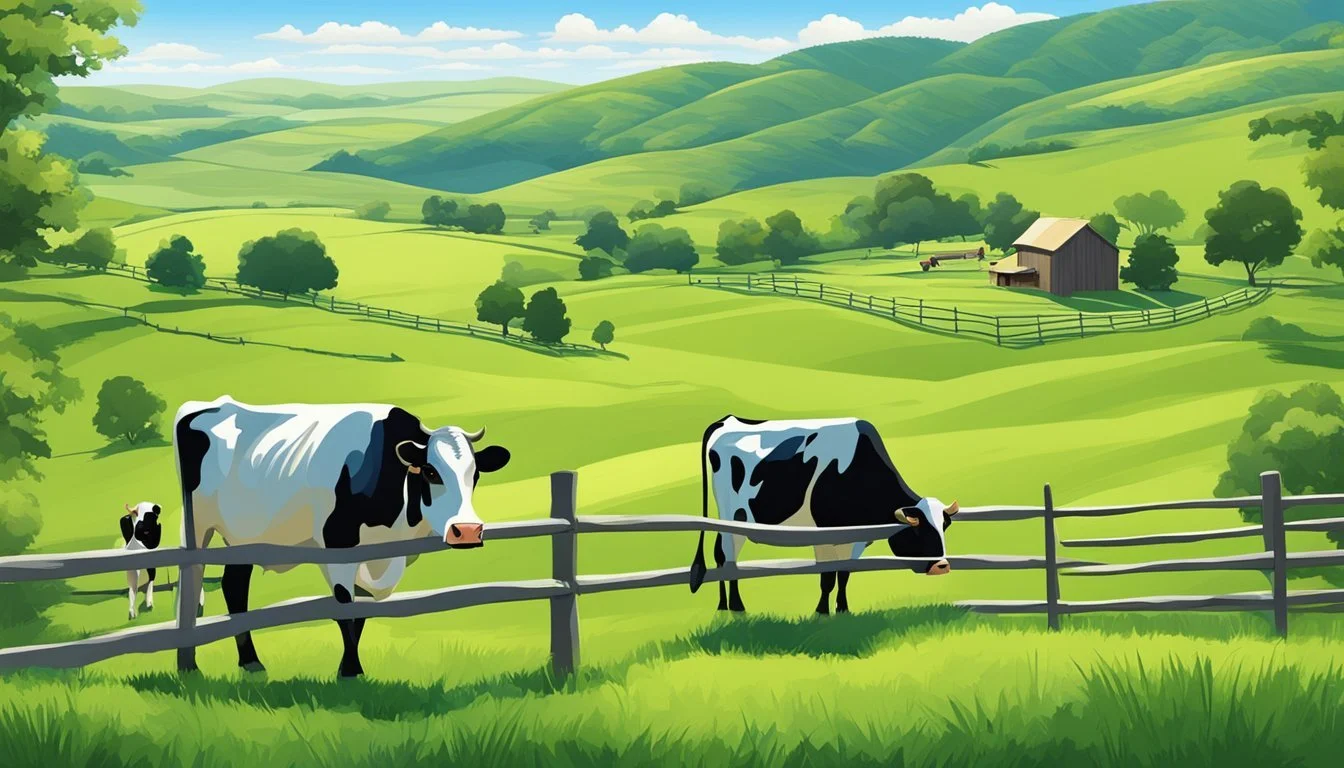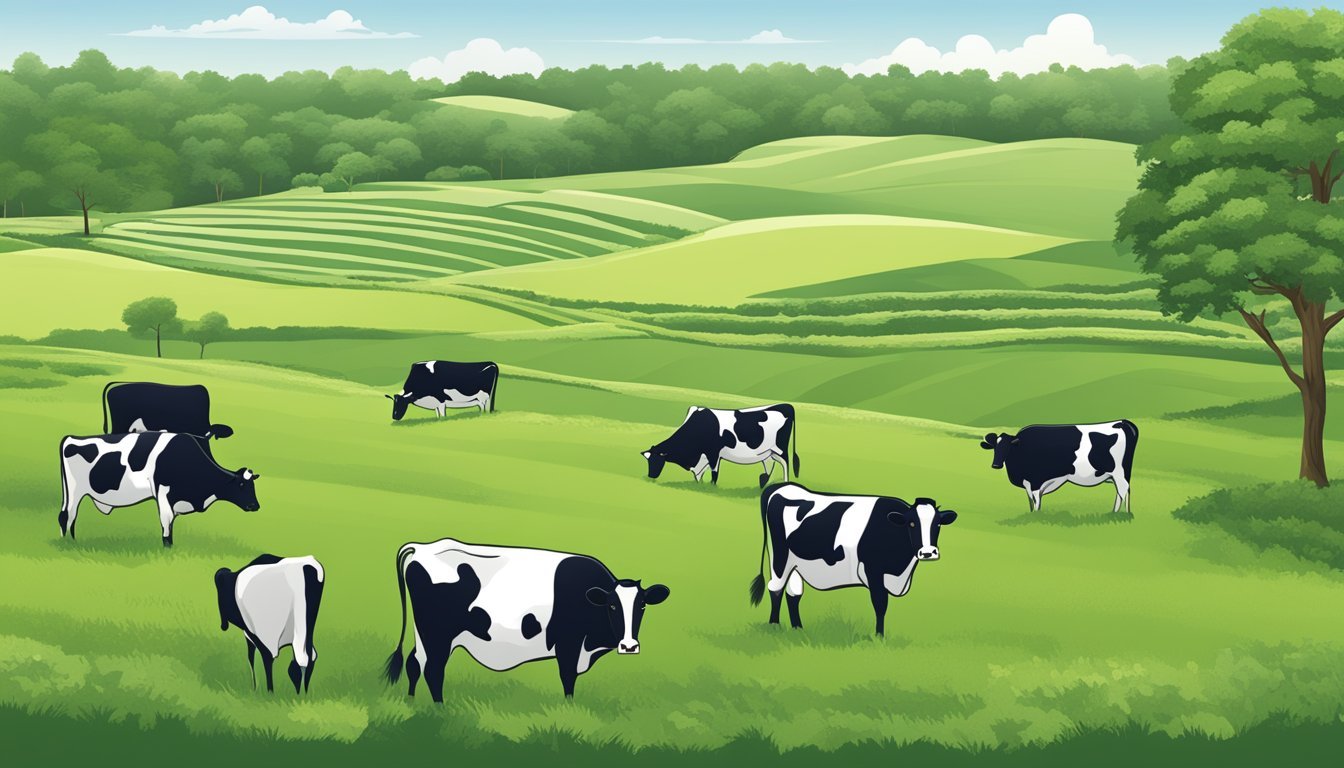Stocking Rate Alabama
Determining Acreage Support for Cows on Your Land
Determining the appropriate stocking rate is a critical factor for successful cattle management in Alabama. Stocking rate refers to the number of cattle that a particular parcel of land can sustainably support over a specific period. It's a balance between the number of animals and the available pasture resources, essentially answering the question: How many cows per acre can a property support? For cattle producers in Alabama, this is not a fixed figure but varies depending on forage availability, which is influenced by soil fertility, rainfall, and pasture management practices.
Several considerations are necessary when establishing the right stocking rate for a cow-calf operation. The size of the property is just the starting point. Managers must evaluate the land's productive capacity, which includes the quality and quantity of forage that the land can produce. Proper stocking ensures that cattle have sufficient grazing throughout the year without overburdening the land, which can lead to degraded pastures and a drop in animal health and growth rates.
Additionally, a well-managed stocking rate accounts for the length of the grazing season and any supplemental feeding requirements during periods of lower forage availability. In Alabama, the grazing season can be extended with appropriate pasture management, and the dependency on stored forages can be decreased, leading to a more economical operation. Finesse in adjusting stocking rates is therefore a key skill for cattle producers, allowing for flexibility in response to changing pasture conditions and ensuring long-term sustainability of the cattle operation.
Understanding Stocking Rate
When it comes to managing cattle operations, particularly in Alabama, the key to sustainability lies in the concept of the stocking rate. This metric guides farmers in aligning the number of cows per acre with the carrying capacity of their land.
Defining Stocking Rate
Stocking rate is the density of livestock on a particular unit of land for a specified period. It is typically expressed as animal units (AU) per acre. An animal unit is standardized as a 1,000-pound cow with a calf up to six months old. The rate is further refined into animal unit months (AUM), indicating how many animal units can be supported on one acre for one month.
Stocking Rate vs. Carrying Capacity
The concept of carrying capacity should not be confused with stocking rate. Carrying capacity refers to the maximum number of animal units a pasture can sustainably support without degrading resources. While stocking rate quantifies the actual number of cows per acre, carrying capacity deals with the potential limit, taking into account the land's ability to regenerate and support livestock.
Importance of Stocking Rate in Cattle Operations
The importance of stocking rate cannot be overstated. It directly impacts the health of the pasture and the well-being of the cattle. An appropriate stocking rate ensures that there is a balance between forage availability and livestock demand, maintaining both the productivity and the ecological health of the land. In Alabama, where pasture conditions can vary, it's imperative that farmers establish and adhere to regionally appropriate rates to avoid overgrazing and resource depletion.
Determining Optimal Stocking Rate for Alabama
In Alabama, the optimal stocking rate for cattle operations depends on various climatic and soil conditions across different regions. It is crucial for the sustainability of pasture health and livestock nutrition to establish the right number of cows per acre.
Factors Influencing Stocking Rate
Several factors must be considered when determining the appropriate stocking rate in Alabama. These include:
Soil-Climate Regions: Alabama's diverse soil-climate regions affect forage production potential, which in turn impacts the number of cattle the land can support.
Forage Production: The type and quality of forage available are critical to support the nutritional needs of cattle.
Pasture Size: The size of the pasture dictates the maximum number of animals it can sustain without degradation.
Grazing Management: Proper grazing management practices ensure the forage is utilized efficiently, influencing the potential stocking rate.
Cattle Size and Weight: Larger breeds with higher body weight will have greater forage needs compared to smaller breeds.
Calculating Stocking Rate: Cows per Acre
To calculate the stocking rate, producers must assess how many cows the pasture can support year-round. This is a basic formula:
Stocking Rate (SR) = Animal Unit (AU) per Acre / Utilization Rate (UR)
A single Animal Unit (AU) is typically one mature cow of approximately 1,000 pounds. The utilization rate should consider the growth rate and availability of forage, as well as the desired level of pasture residue post-grazing.
Using a Cattle per Acre Calculator
Producers in Alabama can use a cattle per acre calculator to simplify the estimation process, factoring in:
Land Size: Input the total acreage available for grazing.
Forage Quality: Select the type of forage and its production potential based on local conditions.
Animal Requirements: Input average body weight and the number of cattle to be stocked.
These calculators are guided by local research and provide a starting point for determining an appropriate stocking rate, though landowners should adjust based on actual pasture conditions and management goals.
Grazing Management Practices
Effective grazing management is crucial for sustaining pasture productivity and ensuring that a property can support an optimal number of cows. These practices involve understanding and implementing different grazing strategies to enhance forage utilization while maintaining animal health and environmental quality.
Rotational Grazing
In rotational grazing, livestock are moved between pasture sections, or paddocks, to allow forage plants recovery time after grazing. This method can optimize forage growth and support a higher stocking density compared to continuous systems. An ideal rotation plan in Alabama might include multiple paddocks grazed for short periods, with rest intervals of around 30 days to promote regrowth.
Continuous Grazing
Continuous grazing involves allowing livestock to graze a specific pasture area without rotation. While it requires less labor, it can lead to less efficient use of forage since cows may overgraze favorite areas and under-use others. In Alabama, continuous systems may be viable but typically support fewer cows per acre as they can lead to overgrazing and pasture degradation when not carefully managed.
Grazing Days and Seasons
Grazing days are the number of days livestock can graze on a given area, which varies widely based on growth conditions and management. In Alabama, the grazing season can extend throughout the year, but the forage growth is typically highest in spring and fall. Management plans should adjust to seasonal variations in forage availability for optimal grazing days.
Multi-Species Grazing
Multi-species grazing, where different animal species graze the same pastures, can enhance pasture use as different species prefer different plants and graze in different patterns. This approach can reduce weed pressure and improve nutrient cycling within the pastures. In Alabama, common multi-species grazing systems may include cattle with goats or sheep to maximize the utilization of available forages.
Forage Management
Effective forage management is essential to maximize the productivity of a cow-calf operation in Alabama. It encompasses optimizing forage production, utilization, and quality, as well as monitoring pasture conditions.
Forage Production and Utilization
Forage production in Alabama must be closely aligned with the nutritional needs of the cattle. The state's diverse climate allows for a variety of forage species to thrive, but choosing the right species is crucial for maximizing forage yield and meeting herd requirements. Forage utilization hinges on ensuring that cattle have access to adequate forage throughout the year. It's a balancing act between the rate of forage consumption and the ability of pastures to regenerate. Utilizing rotational grazing strategies can improve both forage production and utilization, leading to more efficient stocking rates.
Seasonal Forage Availability: Tailor grazing and forage cropping systems to Alabama's seasonal weather patterns.
Rotational Grazing: Implement a system that allows pastures time to recover, which can improve forage yield and support a higher stocking rate.
Improving Forage Quality
The quality of forage is dependent on factors such as species selection and soil fertility. High-quality forage can have a notable impact on animal growth, health, and reproductive success. To enhance forage quality, soil testing and the appropriate application of fertilizers and amendments are essential. Selecting forage species that are well-adapted to Alabama's soils and climate can also lead to improvements in forage quality.
Fertilization: Follow recommendations based on soil tests to ensure optimal forage growth.
Forage Species Selection: Choose species with high nutritional value that are suitable for Alabama's climate and soils.
Pasture Inventory and Monitoring
Regular pasture inventory and monitoring are key to assessing pasture quality and conditions, which supports informed decision-making for stocking rates. This process involves measuring the available forage mass and comparing it against the consumption needs of the cattle. By understanding the dynamic between forage availability and livestock needs, farmers can adjust stocking rates to maintain the health and productivity of their pastures.
Measuring Forage Mass: Determine the amount of available forage to optimize stocking rates.
Pasture Condition Assessment: Regularly assess the pasture to ensure it supports the desired stocking rates without degradation.
Pasture Health and Biodiversity
The productivity and sustainability of a pasture are closely connected to its soil health and the diversity of plant and animal life it supports. These factors directly influence the ideal stocking rate for cow-calf operations in Alabama.
Soil Fertility and Forage Growth
Forage growth is dependent on soil fertility, which is a product of both the inherent mineral content of the soil and the effectiveness of fertilizer application. Plants such as clover and rye can be integrated into pasture systems to naturally enhance nitrogen levels in the soil, which in turn supports healthier forage growth.
Nitrogen-fixing plants:
Clover
Rye
Utilizing a rotational grazing system helps distribute manure evenly and naturally fertilizes the pasture, contributing to the soil's nutrient profile and promoting forage diversity.
Preventing Soil Degradation and Desertification
Maintaining a productive pasture involves preventing soil degradation and desertification, issues that can arise from overgrazing. Strategies for preventing these detrimental processes include:
Rotational grazing to allow pastures to recover.
Monitoring soil compaction to reduce runoff and erosion.
Planting cover crops to protect against soil erosion.
By carefully managing the number of cows per acre and allowing for rest periods between grazing, farmers can sustain the health of their soil.
Encouraging Biodiversity Through Grazing
Intentional grazing practices can encourage biodiversity, which creates a more resilient ecosystem. By alternating livestock between different pastures, they aid in evenly distributing seeds and creating habitats for diverse species. Introducing a variety of forages promotes a balanced diet for livestock and habitats for other organisms. For instance, pollinators thrive in pastures with a variety of flowering plants, like clover.
Promoting pollinators:
Integration of flowering plants such as clover
Creation of diverse plant habitats
Through these methods, farmers not only support the long-term viability of their pastures but also contribute to the preservation of local ecosystems.
Livestock Variables
Stocking rates are not a one-size-fits-all figure and are influenced by the type of cattle being raised and their corresponding body weight. An accurate stocking rate takes into account these livestock variables to ensure a sustainable cattle operation.
Impact of Breed on Stocking Rate
Different breeds of cattle have varying forage needs and weight gain rates, impacting how many head of cattle can be supported per acre. For example, Angus cattle may require different stocking rates compared to Brahman cattle, due to differences in their average body weight and grazing habits. It's essential for producers to understand the specific needs of their chosen breed to establish an appropriate stocking rate.
Adjusting for Cow/Calf Pairs and Body Weight
A cow/calf pair consists of a mother cow and her calf, which together represent a larger unit of livestock requiring more forage than a single animal. Stocking rate adjustments must be made for the inclusion of cows with calves at their side.
Furthermore, body weight plays a crucial role in determining the appropriate stocking rate. The standard measure in many stocking rate guidelines is an animal unit (AU), typically a 1,000-pound cow with a calf. However, if the average body weight of cattle in an operation deviates from this standard, the stocking rate must be recalculated to ensure the pasture can sustain the herd. For instance:
Standard Cow (1,000 lbs): 1 AU
Larger Cow (1,200 lbs): 1.2 AU
This adjustment ensures that cattle have adequate access to forage, accounting for their nutritional requirements and promoting the health of the pasture.
Economic Considerations
In the context of Alabama's cow-calf operations, economic considerations hinge significantly on stocking rates and pasture management. Achieving optimal stocking rates is essential for maximizing profitability, while mismanagement in the form of overgrazing can incur substantial costs.
Maximizing Profit Potential with Optimal Stocking
The profit potential of a cow-calf operation in Alabama is directly influenced by the ability to determine and maintain an optimal stocking rate. Optimal stocking refers to the balance between the number of cows the land can support while maintaining the health of the forage. Management strategies should encompass regular assessment of pasture conditions and livestock weight gain to adjust the stocking rate as necessary. This proactive approach to maintaining stocking rates conducive to both animal and forage wellness can lead to increased economic returns.
Costs Associated with Overgrazing
Overgrazing is a critical management concern that can lead to a cascade of costs. It results from stocking too many cows per acre, exceeding the carrying capacity of the pasture. Consequences include:
Reduced forage quality and quantity: Overgrazing diminishes plant vigor and the regenerative capacity of the grass, leading to a lower quality and quantity of available forage.
Soil erosion and degradation: With the protective plant cover compromised, soil is more susceptible to erosion, affecting future productivity.
Increased feed costs: Operators may need to purchase additional feed to compensate for inadequate forage, elevating production costs.
Managing forage and cattle to avoid overgrazing is vital for the economic sustainability of cow-calf enterprises.
Frequently Asked Questions
Q: What is the average stocking rate for cattle operations in Alabama? A: In Alabama, the average stocking rate for cow-calf operations can vary. Research trials indicate that the potential stocking rate differs across soil-climate regions in the state.
Q: How many head of cattle per acre can my property support? A: This depends on many factors, including pasture quality, forage availability, and soil type. A general rule is 1:1, meaning one cow per one acre of pasture as a minimum requirement. For cow/calf pairs, closer to two acres might be necessary.
Q: Can goats be included in the stocking rate calculation? A: Yes, goats can be included. Their stocking rate should be adjusted based on their size and the standard Animal Unit (AU). Typically, goats will have a lower AU value than cattle.
Q: What is an AUM (Animal Unit Month)? A: AUM stands for Animal Unit Month, which represents the forage needed to sustain one AU, typically a 1,000-pound cow with her calf, for one month.
Q: How should I manage paddocks to optimize stocking rate? A: A paddock rotational grazing system can optimize pasture use and improve stocking rates. Allocating enough space based on AUM calculations, adjusting livestock numbers as needed, and permitting pasture rest periods are important management practices.
Q: How does a cattle operation determine its carrying capacity? A: Carrying capacity is determined by evaluating the forage resources against the needs of the livestock, often referenced in AUMs. Adjustments should be made based on livestock size and class. Regular assessments of pasture health help ensure sustainable stocking rates.
Conclusion
Determining the appropriate stocking rate is crucial for the successful management of cattle operations in Alabama. It ensures sustainable grazing practices and effective pasture management, balanced to promote both animal health and land conservation.
Key considerations for establishing proper stocking rates include:
Soil fertility: Higher quality soils may support more cattle per acre.
Forage availability: Less forage necessitates lower stocking rates to prevent overgrazing.
Climate variables: Seasonal weather patterns influence forage growth and grazing duration.
Alabama beef producers typically aim for a balance that maximizes grazing days while minimizing the need for additional feeds. This approach underpins profitable and environmentally conscious management of cattle operations.
Producers must assess their pastures regularly, adjusting stocking rates to accommodate fluctuating conditions, and employ sustainable grazing practices that promote forage regrowth while supporting the desired cattle density.
By diligently observing these practices, Alabama cattle operations can maintain:
Healthy livestock
Productive pastures
Long-term viability of the land
Careful planning and responsive management are the hallmarks of a successful cattle operation, and this thoughtful approach to stocking rates is fundamental to achieving these objectives.







